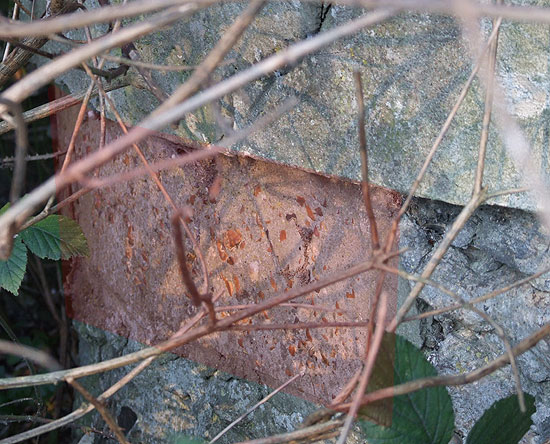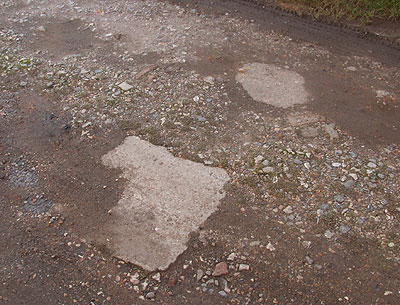Polegate Nodal Point
Posted: 16 December 2007 19:49
I spent the afternoon wandering around Polegate, looking for remains of the Nodal Point defences marked on a sketch map I found in The National Archives.
The town was to be held by elements of two Royal Engineer Companies situated north and south of the railway line, bolstering the local Home Guard garrison.
As a category 'A' Nodal Point, Polegate had an anti-tank perimeter, consisting of isolated lines of cubes stretching across gaps between buildings. Conventional roadblocks obstructed traffic routes into the town with a line of anti-tank mines across two roads.
Two 25-pounder anti-tank guns defended a road-over-railway bridge on the A22, with alternative positions covering another bridge over the branch line leading north out of the town.
I set out looking to find any remaining evidence of the cube perimeter, and also of a loopholed wall that covered a roadblock.
I was very satisfied to find the loopholed wall with very little effort, despite some inconvenient vegetation and the fact that the embrasure had been blocked up again after the war.
Photographing it was difficult; being near a road, my strange behaviour in foraging in undergrowth with a camera resulted in my being hooted by a passing car.
I managed to take the photo below; I've applied a slight red tint to the blocked loophole to make it more visible.

I next went in search of some cubes and 12 roadblock locations in the hope that an isolated block remained hidden in a hedge.

Unfortunately, what in 1940 was open ground has since been built on, and pretty much everything (including a single pillbox) has seemingly gone.
I was just heading back to the car when I walked passed a rough track that ran between two blocks of terraced houses, that, according to the plan, was blocked by a couple of cubes. The cubes have long gone, but their roots appear to still be in situ, as can be seen in the photograph.
Fortunately this roadway has not been metalled or resurfaced since the cubes were removed, making these roots a lucky survival.
- Pete

Email:
Blog Latest

Bishopstone reveals its pillbox secrets
18 October 2021

Pillbox or Observation Post?
10 June 2020

Uncovering the hidden secrets of a pillbox
8 June 2019

Review of 2018
31 December 2018

Wartime Christmas in East Sussex (2)
24 December 2018
Jargon-buster
Cubes
Anti-tanks blocks, popularly known as dragon's teeth. Not to be confused with smaller blocks known as pimples, cubes can be upwards of 1m square. Many examples in Sussex have apexes or chamfered edges, leading to them being incorrectly recorded as coffins.
Embrasure
A loophole or slit that permits observation and/or weapons to be fired through a wall or similar solid construction.
Loophole
Embrasure
Loopholed wall
An existing (e.g. garden) wall into which a loophole has been made by the removal of bricks or stones. Usually applied to freestanding walls as opposed to walls in buildings, which are known as defended buildings.
Nodal Point
Defended road junction(s), usually within a village/town with a Home Guard garrison intended to deny enemy use of the roads. Nodal Points were not to defend the village, but solely the road network. Category 'A' Nodal Points were to hold out for 7 days after invasion without outside assistance.
Pillbox
Generic term for a hardened field defensive structure usually constructed from concrete and/or masonry. Pillboxes were built in numerous types and variants depending on location and role.
This site is copyright © Peter Hibbs 2006 - 2024. All rights reserved.
Hibbs, Peter Polegate Nodal Point (2024) Available at: http://www.pillbox.org.uk/blog/216537/ Accessed: 24 April 2024
The information on this website is intended solely to describe the ongoing research activity of The Defence of East Sussex Project; it is not comprehensive or properly presented. It is therefore NOT suitable as a basis for producing derivative works or surveys!